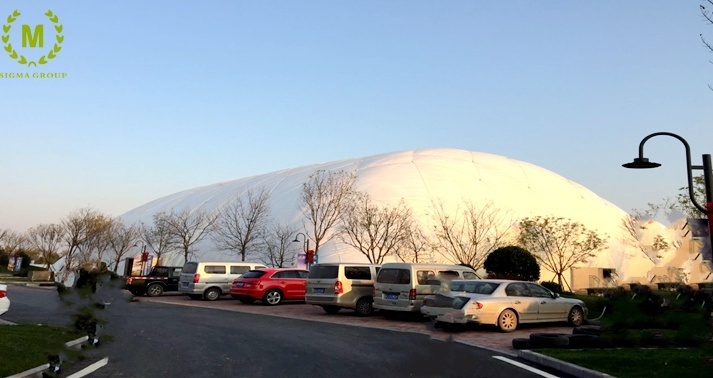An
air-inflated (or air-supported) structure is any building that derives its structural integrity from the use of internal pressurized air to inflate a pliable material (i.e. structural fabric) envelope, so that air is the main support of the structure, and where access is via airlocks.
The concept was implemented on a large scale by David H. Geiger with the United States pavilion at Expo '70 in Osaka, Japan in 1970.

It is usually dome-shaped, since this shape creates the greatest volume for the least amount of material. To maintain structural integrity, the structure must be pressurized such that the internal pressure equals or exceeds any external pressure being applied to the structure (i.e. wind pressure). The structure does not have to be airtight to retain structural integrity—as long as the pressurization system that supplies internal pressure replaces any air leakage, the structure will remain stable. All access to the structure interior must be equipped with some form of airlock—typically either two sets of parallel doors or a revolving door or both. Air-supported structures are secured by heavy weights on
the ground, ground anchors, attached to a foundation, or a combination of these.
Among its many uses are: sports and recreation facilities, warehousing, temporary shelters, and radomes. The structure can be either wholly, partial, or roof-only air supported. A fully air-supported structure can be intended to be a temporary or semi-temporary facility or permanent, whereas a structure with only an air-supported roof can be built as a permanent building.
